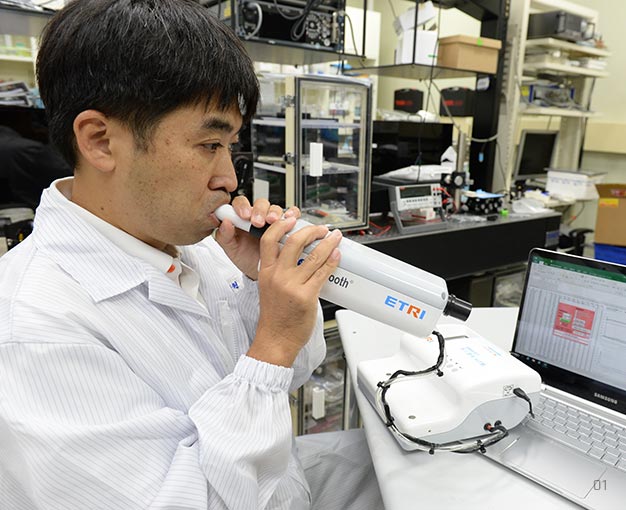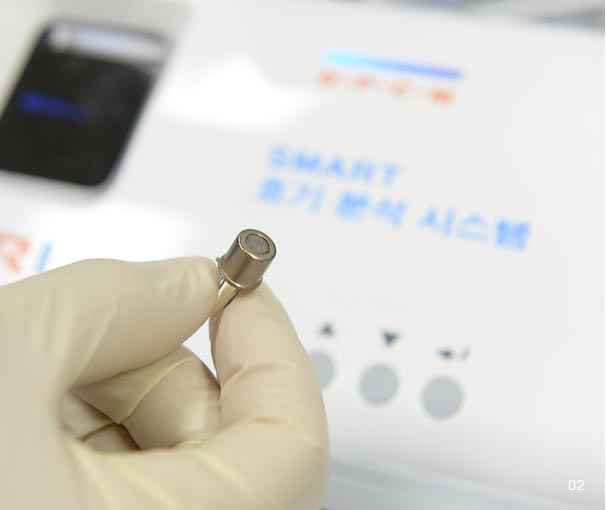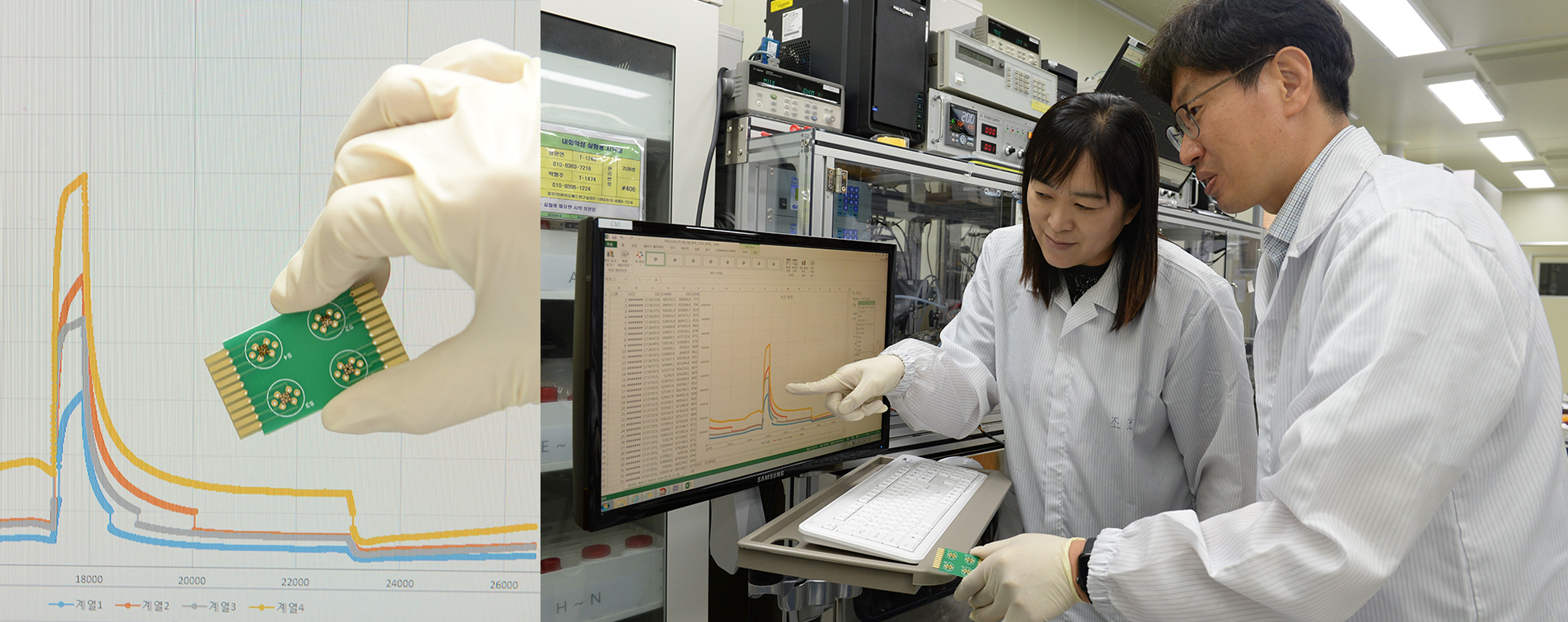
-
Can we apply
the olfactory sense to
certain diseases? -
The olfactory sense is one of the oldest senses of humans and is activated faster than the visual, auditory, and tactile senses. Maybe that is why we use smells first to determine the current situation. For example, if we are at the scene of a fire, we smell first to find out what is burning, instead of looking at the fire first and then smelling around. What if ICT can do the job and inform us of the situation?
Humans have been imitating animals and plants to activate their imagination and become wiser. This is called biomimetics.
The windshield of a car with features of a lotus leaf, a dog-like robot simulating 4-foot animals, a drone looking like a bat, a hummingbird, or a seagull, a body armor inspired by the spiderweb, and some commercial products like swimsuit, sensors, and electric fan show how humans have admired nature and mimicked it to advance technologies.
People capable of excellent olfactory sense are often called “keen-nosed.” Likewise, dogs are known to have at least 10,000 times stronger smelling capability than humans. That is why they are frequently used for detecting drugs or protecting agriculture at airports. Some scientists recently experimented with the noses of dogs. Such research studies include diagnosing cancer or a specific disease with a dog nose. Some foreign teams already applied the technology to colon cancer in 2011, and the result was a whopping 91% accuracy.
-
X-ray
Radiation of short wavelength and
strong penetration for medical purpose
or experimenting materials


-
01
ETRI researcher collecting outbreath
to fill the analysis system.02
Sensor for an expired gas analysis system.
-
Electronic nose
for human health -
A Korean team succeeded in synthesizing an artificial dog nose. With the “electronic nose,” the team simulated how dogs smell with electronic elements. A human nose is connected with numerous neural cells. The team used electronic elements that “sniffed” like a person and converted the smell into electric signals.
The e-nose analyzes the incoming human breath to diagnose a disease, and the team applied this technology to lung cancer. X-ray equipment or scanning like CT and MRI has one huge flaw — exposure to radiation. They also cost a fortune. Such equipment resulted in fast metastasis of the cancer that there was nothing the doctor could do.
Thus, the team created an e-nose system utilizing human exhalation, which applied the breath gas ingredients to the sensor and measured the electric resistance. They were able to identify the presence of the tumor through an algorithm analysis of the ingredient data. Clinical trials and joint research have already been completed with a major hospital (Seoul National University Bundang Hospital). Accuracy of about 75% has been achieved through analysis conducted 200 times. Of course, further research is needed. More patient data has to be collected for big data analysis while boosting accuracy through deep learning algorithm. The team plans to apply the technology to stomach cancer and colon cancer.
-
CT
Tomography of taking an image of the inside
of the human body by projecting X-ray or
ultrasonic waves from diverse angles and
restructuring the results with a computer
-
CG of e-nose for lung cancer diagnosis developed by ETRI

-
Can the e-nose
smell like humans? -
Moreover, some people tend to smell something funny after working out hard. The team, inspired by this phenomenon, analyzed breath following a hard workout session. They managed to identify that funny smell. It is derived from “acetone.”
When lipolysis occurs during workout, acetone comes out through outbreath. This can be utilized for measuring the level of workout, such as how hard a person has worked out.
We have been aware that smells greatly affect human experiences, but research studies on nose and smells have been rather missing as they are hard to reproduce. Now, the advancement of ICT enables such research.
The BNT Research Team of the Korea Research Institute of Bioscience and Biotechnology created an e-nose with bio-nano sensors in 2018. If smells can be consolidated into a database with this technology, the reverse, creating smells, is also possible theoretically. In addition, Sensorwake of France developed in 2016 an olfactory alarm clock that wakes up the user with scent. Smells are linked with tastes. US startup VAQSO came up with a “device triggering the feel” of tasting food in VR by utilizing a scent cartridge. Having succeeded in diagnosing lung cancer with an e-nose, the ETRI team has been working on research combining biotechnology and ICT like the one above for 25 years. The team, aiming to contribute to the public health system, is advancing the system covered herein by improving its accuracy and applying big data.
-
MRI
Test method of taking an image of a section of
the human body by capturing movements of
hydrogen atoms in water molecules with strong
magnetic field and electromagnetic waves
-

Author · Kilho, Chong, Director of Public Relations Department, ETRI
